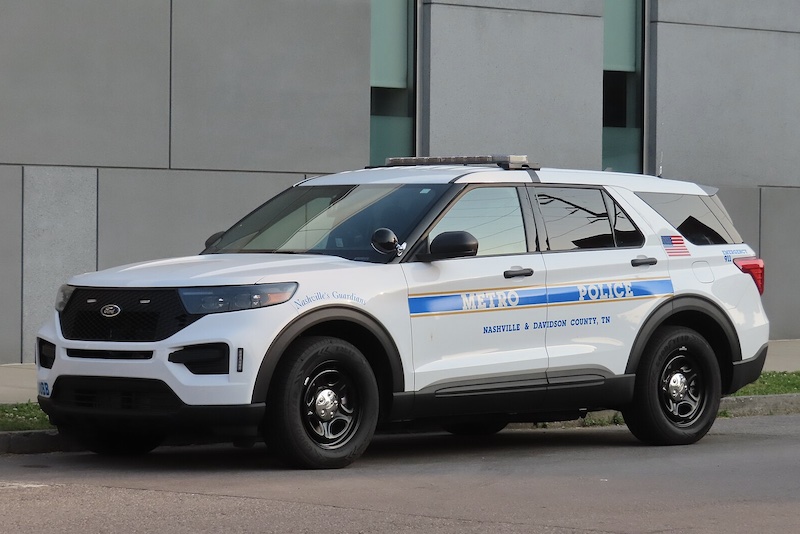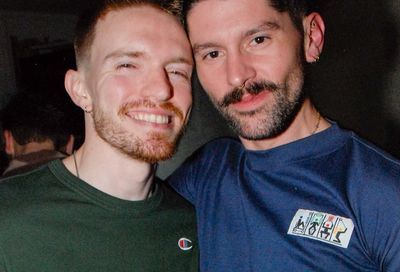A Revolutionary Approach to Finding a Cure for HIV
Excision BioTherapeutics is testing a gene editing therapeutic “designed to cure HIV infections after a single intravenous infusion.”

Earlier this year, San Francisco-based Excision BioTherapeutics somewhat quietly embarked on a historic first-in-human study of EBT-101, the company’s would-be revolutionary, gene editing therapeutic “designed to cure HIV infections after a single intravenous infusion,” according to an Excision press release.
The first participant in Excision’s Phase 1/2 clinical trial of EBT-101 was dosed in July, at the Washington University School of Medicine in St. Louis. Infused with a CRISPR-based drug cocktail that targets the HIV genes inside the body, in order to snip out the HIV genome — and thus the virus — the patient reportedly has so far well-tolerated the treatment.
Dr. William Kennedy, Excision’s Senior Vice-President of Clinical Development, and clinical leader for the EBT-101 program, specifies that the company’s CRISPR-based method of excising proviral HIV will be administered to HIV-infected individuals who are otherwise healthy, and virally suppressed on antiretroviral therapy.
“The CRISPR system is actually two components,” Dr. Kennedy explains. “There’s an enzyme, an endonuclease, it’s a molecule that can cut double-stranded DNA, but it needs a cofactor.”
That cofactor is CRISPR, single-stranded genetic material now called “guide RNAs,” says Dr. Kennedy. “And that guide RNA is actually the target that’s used to specify where the double-strand breaks should be made by the endonuclease.”
For EBT-101, two guide RNA are designed to target the HIV genome in sites throughout the body. “So we’ve got two chances to cut and remove the proviral segment of HIV — the provirus that’s integrated in a chromosome for people who have the latent infection — two chances to cut it out.”
And, Kennedy adds, the unique characteristics of the HIV genome should prevent EBT-101 from seeking out human DNA to cut or alter.
“The unique aspect of the target is that HIV is a genome, it’s a piece of DNA, but it doesn’t look like our DNA,” he says. “And so the CRISPR system will tackle and excise the provirus, but has very limited or rare capabilities to hit the human genome.
“It has no capabilities to do anything to the germ cells, as far as we know. So we are going to test both of those ideas, both the selectivity for the right target and any off-target events. That’s part of the safety evaluation, to make sure we’re not getting any off-target effects. But by design, they’ve been minimized upfront, because the HIV genome is so unique, there’s not a target like it elsewhere in the chromosomes.”
Recently, a second trial participant was dosed in Camden, New Jersey, at Cooper Hospital. A third is “in the queue,” in San Francisco at UCSF. “So we’ve got three centers for our three subjects in major metropolitan centers,” says Kennedy, who adds that the California studies are being supported in part by the California Institute for Regenerative Medicine.
“We’ll probably open one other site. I think as we’re learning, it’s a big ask in terms of the commitment from a subject to participate. It’s a lot of work for the clinical sites who are busy doing other studies, and I think, realistically, it’s probably going to be one, or up to 2 [participants] per center. So we’re certainly going to open an additional site to keep things active and ensure that we can enroll all our subjects we want to.”
The study requires a tremendous leap of faith from participants. At some point, subjects must consent to pausing the antiretroviral drugs and treatments that suppress the virus and help keep them healthy and alive. “That actually has a formal name,” says Kennedy. “[It’s] called the Analytical Treatment Interruption, or ATI for short. It actually started from research at NIH, when they were developing therapeutic vaccines under Tony Fauci. They had to have a method to evaluate, was the vaccine working, for example? And the only way to really know for sure is to stop the background antiretroviral therapy.”
Beyond the physiological ramifications of pausing a patient’s therapy, the study investigators have to consider the potential psychological effects for someone who relies on that therapy to protect themselves and others.
“It’s a very carefully constructed analytical treatment interruption,” Kennedy insists. “And fortunately, clinicians have got together with patient advocates and others to have guideline documents and consensus statements.”
However, those guidelines don’t constitute an FDA-approved process. “So we use what the HIV community, as scientists, as people living with HIV, have all contributed to how should this be done safely, and under what parameters.”
Kennedy calls safety the primary driver and primary objective of this breakthrough study. The program’s primary goal, of course, is to cure HIV. To date, only a handful of the nearly 40 million people around the globe living with HIV have been cured, using extremely individualized methods like STEM-cell replacement.
But, unlike those rarefied candidates who qualified for STEM-cell treatments, practically any virally suppressed person with HIV could use EBT-101. “I think this really opens the door for, can we do something with a broader and more accessible approach,” says Kennedy.
“STEM cell is a very highly specialized method. It’s not open for all people. The initial person that really transformed the thinking was a patient named Timothy Brown — he eventually let his name be known — who did receive a bone marrow transplant with a particular deletion of a receptor that disallows the HIV virus from transmitting itself inside the body.
“He [was] probably one of the more studied people on the planet because of what happened,” says Kennedy. “It really was dramatic. And there’s only been a handful of these cases like that, but it’s not generally applicable. You’re not going to be doing bone marrow transplants unless somebody needs that, like they had cancer for that individual.” EBT-101 is a method that doesn’t require something special around the person’s health or disease status.
“We’re actually taking so-called healthy people, I would say, in all other regards, and then using I.V. infusion of our investigational product. So it’s something that anybody can get. It’s not as easy as a pill. But it’s a lot easier than anything else out there, like ex vivo or transplant, that makes it much more accessible. That’s very important for anybody’s hopes for a cure that it’s going to be accessible.”

Accessibility will also come down to price, about which Kennedy can reveal only that Excision has arrived at “no price at this point other than we know that it’s going to be expensive because of the material cost. We definitely don’t want to be in a situation where we’re making something and nobody can use it because they can’t afford it. That makes no sense.”
And before naming a price, the trial investigators must make sense of EBT-101’s risk-benefit profile.
“We’re at the point where we know everything is a risk, until you start seeing some data. This is the purpose of the first study — we’re going to collect safety data. We’re going to start to see that, well, the risk is maybe less,” Kennedy predicts.
“Now we hope that we see something of a benefit. We see someone who can go off their ART medications and they can stay off. That’s going to transform us in the field, us as a company, and really for people living with the disease, this is going to be something we want to talk about, and we want to encourage that discussion in a formal setting and in other settings where we’re really comfortable with ‘This is what the data is telling us.’”
Support Metro Weekly’s Journalism
These are challenging times for news organizations. And yet it’s crucial we stay active and provide vital resources and information to both our local readers and the world. So won’t you please take a moment and consider supporting Metro Weekly with a membership? For as little as $5 a month, you can help ensure Metro Weekly magazine and MetroWeekly.com remain free, viable resources as we provide the best, most diverse, culturally-resonant LGBTQ coverage in both the D.C. region and around the world. Memberships come with exclusive perks and discounts, your own personal digital delivery of each week’s magazine (and an archive), access to our Member's Lounge when it launches this fall, and exclusive members-only items like Metro Weekly Membership Mugs and Tote Bags! Check out all our membership levels here and please join us today!


























